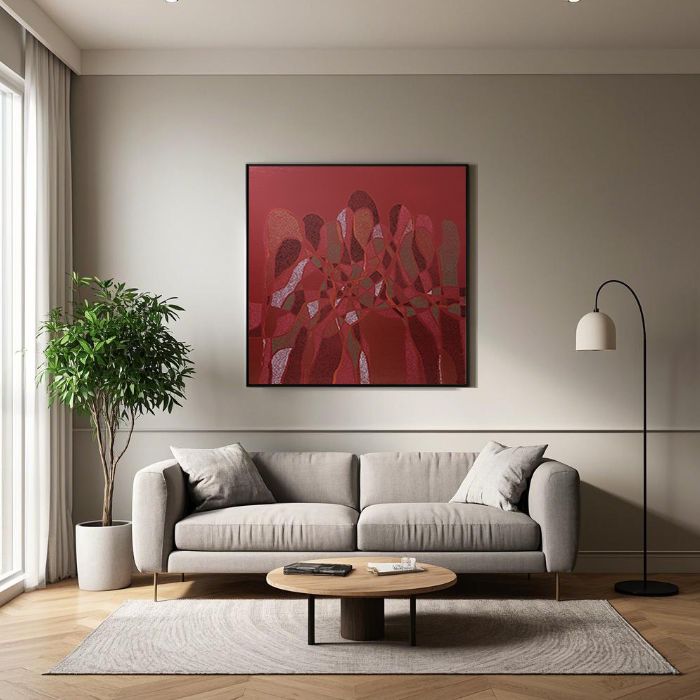Introduction: What Does It Mean to “Reflect the Self”?
When we stand before an abstract painting like Reflecting the Self, we’re not simply observing a piece of art—we’re engaging in an inner dialogue. Abstract oil painting, unlike figurative or realistic work, strips away the physical world to reveal the emotional, psychological, and even spiritual.
As Jackson Pollock once said, “Painting is self-discovery. Every good artist paints what he is.” In this blog, we’ll explore how Reflecting the Self embodies that very principle—inviting the viewer to discover their own layers, contradictions, and truths through abstraction.
Abstract Expressionism: A Portal to the Self
Abstract art doesn’t imitate life—it distills it. It’s about emotion, energy, rhythm, and often chaos. Reflecting the Self, with its vibrant layering of form and texture, reminds us of the works of artists like Mark Rothko or Helen Frankenthaler, who believed in expressing feeling through color and space rather than shape and realism.
Instead of telling us what to feel, this painting opens a portal into our subconscious. Its swirling textures and layered tones allow each person to walk away with a unique interpretation.
Color as a Mirror: The Language of Feeling
Wassily Kandinsky once said, “Color is a power which directly influences the soul.” That truth is evident in Reflecting the Self. The color palette—subdued yet tense, layered yet harmonious—acts as a mirror to the viewer’s emotional state.
The viewer might see serenity, conflict, longing, or curiosity. This power to evoke such deeply personal responses is the hallmark of great abstract art. The absence of literal objects gives us permission to bring our own meanings.
Why Abstract Oil Paintings Speak in Silence
There’s something paradoxical about Reflecting the Self—it’s loud in its movement, yet silent in its message. The brushstrokes are deliberate but not confining. Like meditation, it is an open-ended invitation to be present.
Abstract art isn’t always about resolution. Sometimes, as in this painting, it’s about sitting with the unknown, the contradictions within the self, the thoughts we rarely give voice to.
Hung in a living room, studio, or hallway, this artwork doesn’t dominate the space—it deepens it. It whispers rather than shouts.
Using Abstract Art in Interior Spaces: Emotional Functionality
Beyond personal meaning, abstract oil paintings like Reflecting the Self serve a powerful purpose in home and office spaces. Unlike narrative or scenic pieces, they provide continuous visual engagement. You never fully “understand” it, which makes it timeless.
This painting, with its intricate emotional layering, suits spaces where introspection or creativity is encouraged—such as reading corners, therapy rooms, design studios, or minimalist interiors.
It is also a conversation piece. Whether visitors see fire, water, human form, or pure abstraction, they are likely to ask, “What do you see?”
The Gift of Interpretation: Abstract Art as Self-Inquiry
One of the beautiful things about Reflecting the Self is that it gives nothing and everything at once. There is no “correct” interpretation. That makes it deeply intimate. Every encounter with it is slightly different depending on your current state of mind.
It reminds us that self-reflection is not always about answers. Sometimes, it’s about learning to sit with ambiguity—and embracing the complexity of being human.
Conclusion: The Self Is a Canvas
Reflecting the Self is more than oil on canvas. It’s an emotional echo. It reflects the viewer as much as the artist, making it both personal and universal.
To quote abstract painter Hans Hofmann: “The ability to simplify means to eliminate the unnecessary so that the necessary may speak.” This painting speaks volumes—not through clarity, but through openness.
